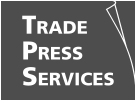
Email “open” rates are a key metric for measuring email marketing success—they signal whether your campaign has captured your audience’s attention or fallen flat. Since email marketing remains one of the most effective tools in a B2B marketer’s arsenal, optimizing email open rates is essential for increasing engagement, generating leads, and maximizing ROI.
To accomplish these goals, here are some tips for improving email open rates and achieving better marketing results.
1. Make a strong first impression.
The initial email a recipient opens from you sets the tone for future interactions. A compelling welcome email can establish trust and increase the likelihood of subsequent emails being opened. Delivering value right from the start is key to building a strong foundation with your audiences.
Pro tip: Offer content recommendations with links to your blog, newsletter, or other content on your website. This gives your new subscribers insight into what you do and how you do it.
2. Craft compelling subject lines.
The subject line can make or break a campaign’s open rate. As the first (and perhaps only) thing your subscribers see, it’s essential to ensure subject lines are concise, clear, intriguing, and valuable. Personalization, such as including the recipient’s name or company, can significantly boost open rates. Additionally, A/B testing different subject lines can help identify what resonates most with your audience. Don’t forget the preheader text, which appears alongside or below the subject line. Use this extra real estate to ask a question, create urgency, spark curiosity, or add a special offer.
Pro tip: Artificial intelligence (AI) tools can help with word choice, length, tone to help craft subject lines that are more likely to strike a chord. Online tools include CoSchedule and SubjectLine. ChatGPT can also help brainstorm ideas.
3. Optimize timing and frequency.
Timing is everything in email marketing. Research suggests that the best days to send B2B emails are Mondays and Tuesdays, while the best times are mid-morning or early afternoon. Still, these recommendations can vary depending on your specific audiences. Analyze email metrics and experiment with different send times and frequency to help determine an optimal schedule.
Pro tip: Avoid overwhelming your audience with too many emails, as this can lead to unsubscribes and spam complaints. Focus on quality over quantity.
4. Personalize and segment your audience.
Generic, one-size-fits-all emails rarely perform well. Instead, segment your email list based on factors such as industry, job title, previous interactions, and buyer journey stage. Tailor messaging to each segment to ensure content is relevant and valuable, which increases the likelihood of opens and engagement.
Pro tip: Allow subscribers to opt in or out of specific topics, promotions, or types of messages.
5. Maintain a clean email list.
An email list with inactive or incorrect addresses can damage open rates. Regularly clean your list by removing unengaged subscribers, deleting bounced messages, and correcting invalid email addresses. This practice not only improves open rates but also enhances overall deliverability.
Pro tip: From time to time, remove contacts that haven’t opened any of your emails and don’t respond to a reactivation campaign.
6. Avoid spam triggers.
It’s a fact: emails that end up in the spam folder won’t get opened. To improve deliverability, avoid spammy words like “free,” “guarantee,” or excessive exclamation marks. Ensure that your emails are compliant with email regulations such as CAN-SPAM and GDPR.
Pro tip: Use a recognizable sender name and a verified domain to help build trust and credibility.
7. Provide value in every email.
If your recipients consistently find value in your emails, they’ll be more likely to open them. Share industry insights, actionable tips, exclusive offers, or personalized recommendations. A strong value proposition that carries through all messaging ensures that your audiences see your emails as a must-read rather than just another sales pitch.
Pro tip: Not sure what your audiences want to hear about? Conduct an email survey to find out more about topics of interest, messaging preferences, and other key factors.
Keep Evaluating, Keep Improving

Remember, even the most well-crafted email is useless if it goes unopened. To maximize success, monitor email metrics, including open rates, click-through rates, and conversions. Identify trends and areas for improvement and adjust your strategy accordingly. Testing different subject lines, content formats, and sending times will help you refine your approach over time. Increasing email open rates requires a combination of strategic planning, audience understanding, and ongoing optimization.

